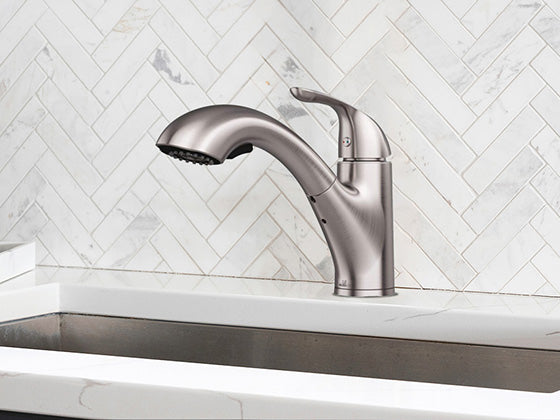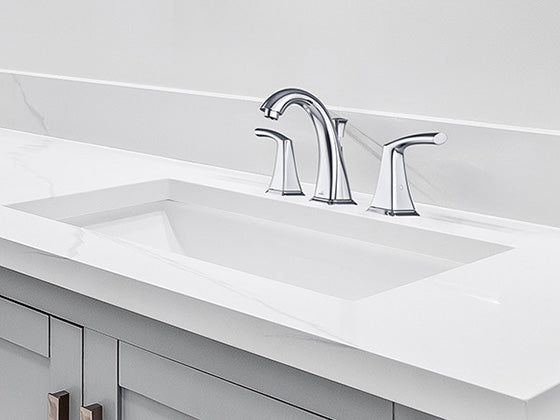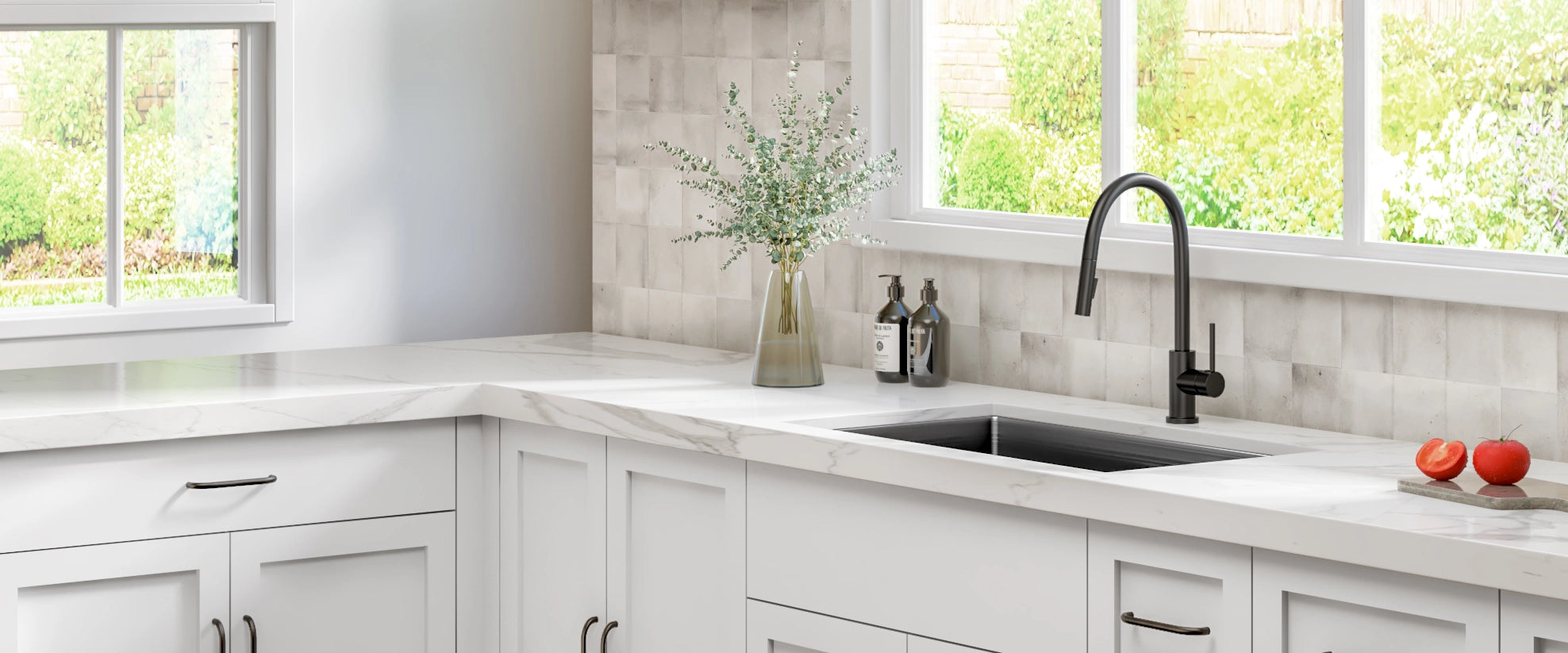At first glance, measuring a kitchen sink seems pretty straightforward. You just need how wide, how deep, and how tall the basin is, right? Not exactly.
If you’re replacing a basin in an existing space, it's easier to find a sink to fit what's already there. If you're preparing a new space in your countertop for the sink, you may be able to customize it to the basin you like.
How to measure a kitchen sink depends on how the sink will be mounted. Let’s look at the main three types of kitchen sink designs and how to measure them to be sure you get the best fit.
How to Measure Top-Mount Sinks


A top-mount sink is also called a drop-in sink. As the name implies, these sinks drop into a hole in the countertop and hang from a lip that lays on top of the counter.
First, measure the inside dimensions of the countertop opening where the sink will sit. That tells you the maximum sink size that will fit.
The rim of the sink will overlap the countertop edges. You want the countertop opening to be slightly smaller than the widest parts of the basin’s top rim.
For a top mount sink, you’ll want to measure the outer edges of the underside of the basin so that the thickness of the material is accounted for.
For example, you may want 27” of space inside the basin. Stainless steel will only add a few millimeters of extra width to your sink. But if you choose a thick material like enamel coated cast iron, the walls of the basin will be much thicker and could change how much space you need.
How to Measure Undermount Sinks


For an undermount sink, you’ll need to know the length and width of the countertop opening. You also need to know how much vertical space you have under the countertop.
First you’ll need to measure the countertop opening just like for a top-mount sink. These dimensions should match the inside of your sink basin, rather than the outside.
The inside of an undermount sink basin should hang flush from the finished edges of the counter where it’s mounted. Make sure to leave enough space between the basin and the backsplash to install a faucet.
If the rough drain outlets are already installed, you’ll need to make sure your sink basin won’t run into the outlets or other plumbing. To determine how deep your basin can be, measure from the top of the supporting cabinet (not the countertop) to the drain outlet.
Your basin should not extend past the drain outlet. Leaving a little extra room for the drain and P-trap is also a good idea.
How to Measure Farmhouse / Apron Front Sinks


Farmhouse or apron front sinks are a bit more complex because the apron extends to the edge of the countertop. Some apron front sinks are undermount and others have a rim like a drop-in sink.
For an undermount farmhouse sink, measure the interior of the basin the same way as an undermount sink. You want the sides and back of the basin to lie flush with the finished edges of the countertop.
If there is a rim on your farmhouse sink, you’ll measure the sides and back like with a top-mount sink.
In both cases, you’ll need to make sure the apron lines up with the cabinet fronts. The apron should be wide enough to fill the space without being too large.
You may be able to install your apron front sink with standard cabinets if the apron is not too tall. However, if you choose a farmhouse sink with a tall apron, you may need custom cabinets to accommodate it.
Like an undermount sink, you’ll need to leave room for a faucet and make sure your basin doesn’t run into the drain outlet.
How We Can Help
Once you know the dimensions of the space where you’ll be installing your sink basin, you can find detailed specs on each model we offer on our website. This should ensure you get a perfect fit.
However, we also understand that things can go wrong! That’s why we offer a 30-day money back guarantee.
If you’re in doubt or need troubleshooting or installation support, our dedicated customer support team is here to help.
















